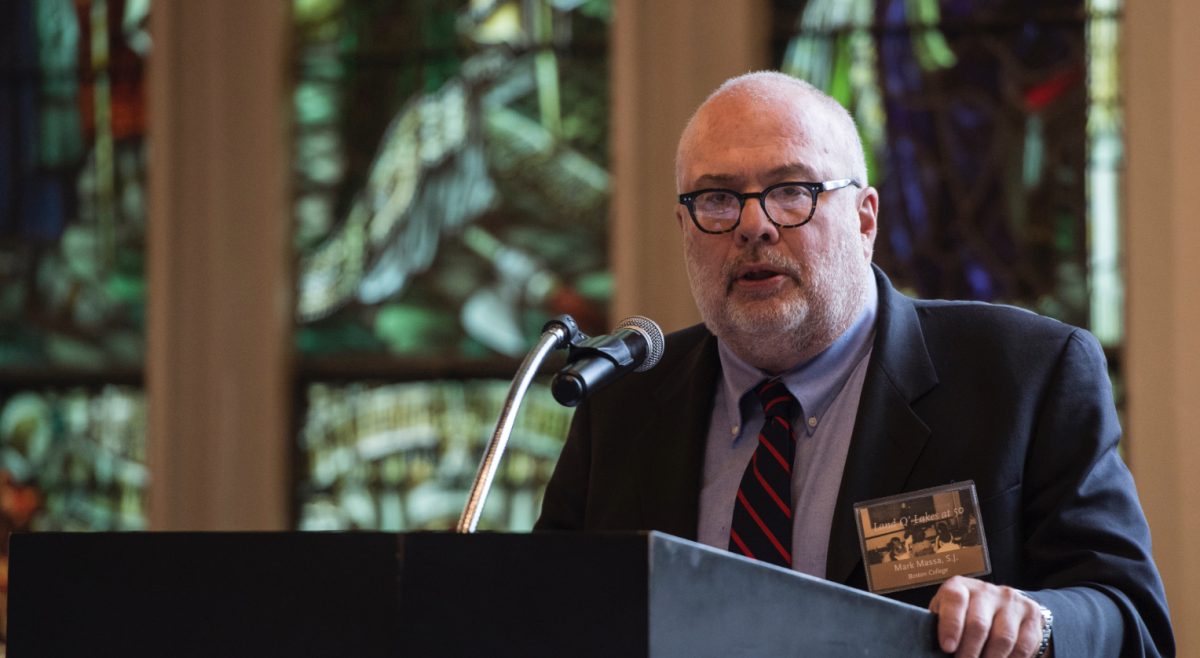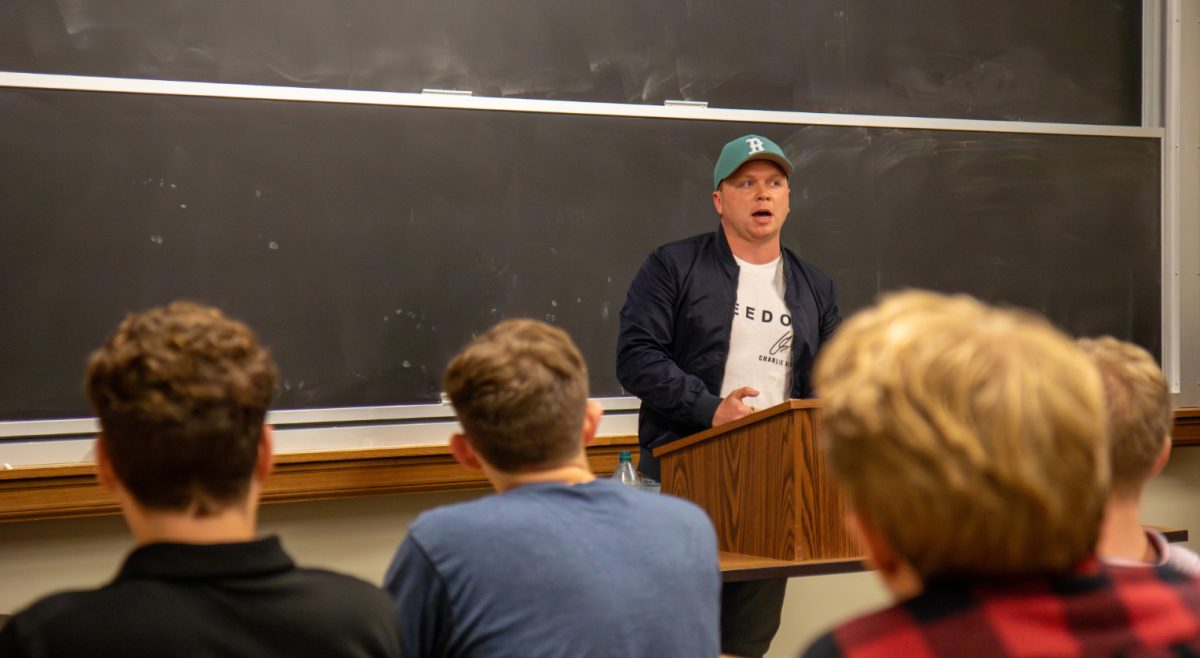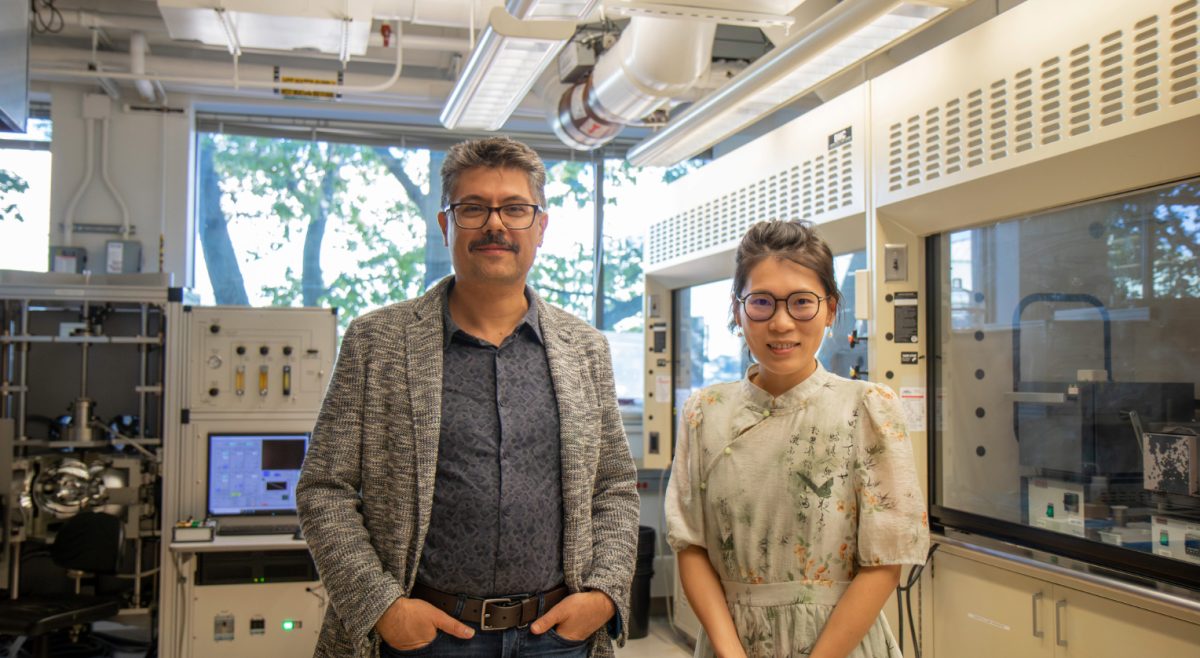To celebrate the recent restoration of Boston College’s famous bronze eagle statue, a replica of which now famously sits atop its perch on a column on Linden Lane, the McMullen Museum of Art on Brighton Campus will present the exhibit EagleMania: Collecting Japanese Art in Gilded Age America, beginning Monday.
The exhibit is co-curated by Diana Larsen, McMullen’s assistant director of exhibition design, collections management, and curatorial affairs; and Victoria Weston, an art professor at University of Massachusetts Boston.
Since 1993, following significant weather damage, the original bronze statue has been retired to Skylight Studios, an art supply store in Woburn, Mass., according to a panel from the Eaglemania exhibition. Robert Shure, the store’s owner, held onto the original for 20 years until Rus Gant, director of the Visualization Research Laboratory at Harvard University and a lecturer on New England history, art, and culture at Showa Boston in Brookline, began doing research on the origins of the sculpture in 2015.
Upon discovering that the eagle currently on display outside Gasson Hall was a replica, Gant reached out to Shure, who showed Gant the original. Gant alerted Ben Birnbaum, then the University’s executive director of communications, of the situation.
“With the owner Bob Shure, we assessed the condition of the eagle, finding it in a rather sorry state, covered in dust and in several pieces,” Larsen said in a lecture at McMullen on Nov. 14, 2018.
From there, the eagle moved from Skylight Studios to BC’s official warehouse in Newton, after which the restoration process started. The process included the repair of the eagle’s weather-damaged exterior, reattachment of the wings, and the fitting of an interior armature to hold the detached pieces together.
The bronze eagle originated from Japan and was sculpted during the Meiji period, an era in Japanese art from 1868-1912 when the Empire of Japan began to transition from a predominantly feudal society to a Westernized civilization.
The statue made its way to the United States when it was purchased by Larz Anderson, a U.S. diplomat, and his wife Isabel Weld Perkins on their honeymoon, part of which they spent in Japan. The couple’s estate, the Anderson Estate, was donated to the town of Brookline in 1948 following Perkins’ death and became known as Anderson Park.
Part of the exhibit features the story of the Andersons, including pictures of the eagle proudly displayed on their famous residence.
The eagle was then given to Gus Anderson—no relation to Larz—who was born on the estate and served as Perkins’ personal secretary until her death. He kept the Meiji bronze on his property until he grew concerned for the statue’s safety from the weather, after which he donated the eagle to BC due to a special affinity that the Andersons had for the University, thanks to Larz’s noted enjoyment at a BC theatre production.
Larsen said in her November lecture that, according to Gus’ living relations whom she had contacted, the University gave Gus a single ticket to a football game against Holy Cross in return.
“I hope they won, at least,” Larsen said with a laugh.
Stationed on Upper Campus until 1955, the eagle was finally paired with its famous pedestal when BC acquired a monument to Adm. George Dewey, which formerly stood before South Station in Boston. In the same year, the eagle was painted the same gold as its replica displays now.
In full, the exhibit displays Meiji period art, focusing mostly on the period’s attachment to eagles and other birds of prey—a peculiar subject, as raptors of this type were not indigenous to Japan—through an exploration of the period’s paintings, impressions, and figures like BC’s eagle.
“It’s really important to have [Weston] who’s an expert of Japanese art, because what we wanted to do was contextualize this eagle,” Larsen said. “So the whole idea of this exhibit is the bringing back of this newly restored work of art that belongs to Boston College. But to do that, we thought, ‘well, what are we going to do to make this thing come alive?’”
The work of Chokichi Suzuki, a Meiji period artist, is shown prominently throughout the exhibit. He specialized in birds of prey and showcased his work at world festivals in Japan—similar to where the Andersons acquired the original bronze eagle.
Correction (2/16/19, 10:30 p.m.): This article originally credited Larsen as the person who discovered the original eagle was stored at Skylight Studios. This article has been updated to properly credit Rus Gant for finding where the original was.
Featured Image by Kaitlin Meeks / Heights Senior Staff












